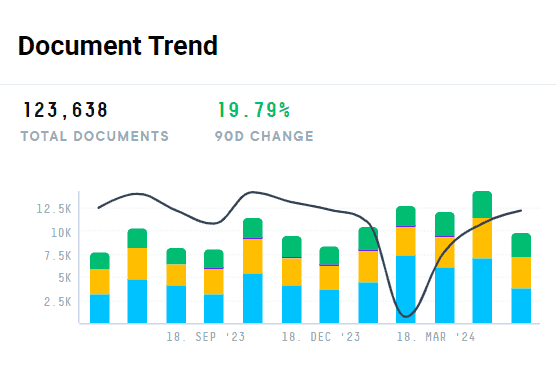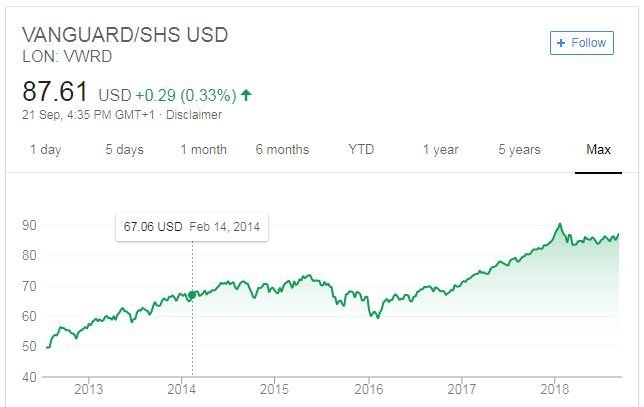5 Key Dos And Don'ts To Succeed In The Private Credit Boom

Table of Contents
Do: Understand the Landscape of the Private Credit Boom
Successfully navigating the private credit boom requires a thorough understanding of the market's current dynamics. This involves analyzing prevailing trends and identifying your niche within this competitive space.
Analyze Market Trends
The private credit market is constantly evolving. Staying informed about key trends is paramount for success. These trends include:
- Increased competition amongst lenders: The influx of capital into the private credit market has led to intensified competition, necessitating a strategic approach to differentiate your offerings.
- Shifting investor preferences: There's a growing emphasis on Environmental, Social, and Governance (ESG) factors, influencing investment decisions and the types of borrowers attracting capital. Investors are increasingly seeking opportunities aligned with their ESG goals. Understanding and adapting to these preferences is crucial.
- Technological advancements impacting due diligence and underwriting: Technological advancements are transforming how due diligence is performed and creditworthiness is assessed. Leveraging these tools is essential for improving efficiency and reducing risk. This includes advancements in data analytics, artificial intelligence, and machine learning.
Identify Your Niche
Specializing within the private credit market is essential for achieving a competitive edge. Instead of trying to be everything to everyone, focus your efforts on a specific area:
- Focus on specific industry sectors: Concentrating on sectors like real estate, healthcare, or technology allows you to develop deep industry expertise, leading to more informed investment decisions.
- Target specific borrower profiles: Whether you focus on small and medium-sized enterprises (SMEs), large corporations, or specific credit ratings, a targeted approach enables a more efficient allocation of resources and better risk management.
- Develop expertise in specific lending strategies: Mastering specific lending strategies, such as unitranche loans, mezzanine financing, or senior secured lending, can set you apart from competitors and attract specialized investors.
Don't: Neglect Thorough Due Diligence
The private credit boom presents significant opportunities, but it's crucial to mitigate risks through rigorous due diligence. Overlooking this crucial step can lead to substantial losses.
Comprehensive Risk Assessment
A thorough risk assessment is paramount in private credit investing. This involves:
- Thorough financial analysis of potential borrowers: Scrutinize financial statements, cash flow projections, and key performance indicators (KPIs) to understand the borrower's financial health and repayment capacity.
- In-depth assessment of collateral and security: Carefully evaluate the quality and value of any collateral offered as security for the loan. Consider potential risks associated with the collateral, such as market volatility or obsolescence.
- Evaluation of management team capabilities and experience: Assessing the management team's competence and track record is essential, as their expertise directly influences the borrower's success.
Overlook Legal and Regulatory Compliance
Navigating the regulatory landscape is crucial. Ignoring legal and regulatory requirements can expose you to significant legal and financial risks:
- Staying abreast of evolving regulatory changes in the private credit market: The regulatory environment is constantly evolving, so staying informed about changes is crucial.
- Ensuring compliance with relevant laws and guidelines: Strict adherence to all applicable laws and regulations is non-negotiable.
- Seeking legal counsel for complex transactions: Don't hesitate to consult legal professionals for advice on intricate transactions to avoid potential legal pitfalls.
Do: Build Strong Relationships
Building and maintaining strong relationships is essential for success in the private credit market. This applies to both borrowers and other market participants.
Networking and Partnerships
Actively cultivate your network:
- Attending industry conferences and events: Networking events provide invaluable opportunities to connect with potential borrowers, investors, and other market players.
- Developing relationships with key players in the private credit market: Build relationships with lawyers, accountants, and other professionals who can add value to your transactions.
- Leveraging professional networks: Utilize platforms like LinkedIn to connect with industry experts and expand your reach.
Cultivate Borrower Relationships
Fostering long-term relationships with borrowers is crucial for repeat business and referrals:
- Providing excellent customer service: Respond promptly to inquiries and provide clear communication throughout the lending process.
- Being responsive to borrower needs: Demonstrate flexibility and willingness to adapt to changing circumstances.
- Offering flexible financing solutions: Tailor your financing solutions to meet the specific needs of your borrowers.
Don't: Underestimate the Importance of Technology
Technology plays a critical role in enhancing efficiency and reducing operational costs in private credit.
Leveraging Technology for Efficiency
Embrace technology to streamline your operations:
- Using data analytics to assess risk and identify opportunities: Data analytics tools can help you identify promising investment opportunities and mitigate risks more effectively.
- Employing automation tools to streamline processes: Automate tasks such as loan origination, underwriting, and reporting to improve efficiency and reduce errors.
- Utilizing CRM software to manage borrower relationships: CRM systems help you track interactions, manage communications, and nurture relationships with borrowers.
Ignoring Data-Driven Decision Making
Making informed decisions based on data is critical:
- Utilizing credit scoring models: Employ sophisticated credit scoring models to assess the creditworthiness of potential borrowers.
- Analyzing market data to inform investment strategies: Use market data to identify trends, assess risk, and inform your investment strategies.
- Tracking key performance indicators (KPIs): Regularly monitor key performance indicators to track the success of your investments and make necessary adjustments.
Do: Have a Clear Exit Strategy
Planning for liquidity is essential in private credit investing. A well-defined exit strategy is critical for maximizing returns and minimizing risk.
Planning for Liquidity
Consider these aspects of your exit strategy:
- Identifying potential buyers or refinancing options: Explore potential exit options, including selling your investment to another investor or refinancing the loan.
- Understanding the liquidity characteristics of the private credit market: Recognize that private credit investments are typically less liquid than publicly traded securities.
- Building in flexibility to adjust the exit strategy as needed: Be prepared to adapt your exit strategy based on changing market conditions or unforeseen circumstances.
Consider Secondary Market Opportunities
The secondary market for private credit is growing, offering alternative exit options:
- Understanding the dynamics of the secondary market: Familiarize yourself with the pricing mechanisms, trading conventions, and regulatory considerations of the secondary market.
- Assessing the potential benefits of selling investments on the secondary market: Determine whether selling investments on the secondary market aligns with your investment objectives.
- Identifying potential buyers in the secondary market: Build relationships with potential buyers in the secondary market to facilitate a smooth and efficient exit.
Conclusion: Thriving in the Private Credit Boom
Successfully navigating the private credit boom requires a strategic approach that incorporates the five key dos and don'ts discussed in this article. Understanding the market landscape, performing thorough due diligence, building strong relationships, leveraging technology, and planning a clear exit strategy are all critical for achieving success. Master the private credit boom by applying these strategies to your own private credit investments and capitalize on the opportunities in alternative lending. By understanding and proactively managing the risks and opportunities, you can effectively navigate this dynamic market and achieve significant returns in the burgeoning world of private debt. The private credit market presents substantial potential for growth; seize the opportunity and build a successful portfolio.

Featured Posts
-
 Neal Mc Donough The Rigorous Training Behind His New Bull Riding Video
May 24, 2025
Neal Mc Donough The Rigorous Training Behind His New Bull Riding Video
May 24, 2025 -
 90 Let Sergeyu Yurskomu Pamyat O Genii Paradoksov
May 24, 2025
90 Let Sergeyu Yurskomu Pamyat O Genii Paradoksov
May 24, 2025 -
 Ferrari Owners Gear Guide From Track Day To Daily Drive
May 24, 2025
Ferrari Owners Gear Guide From Track Day To Daily Drive
May 24, 2025 -
 Amundi Msci All Country World Ucits Etf Usd Acc Net Asset Value Nav Explained
May 24, 2025
Amundi Msci All Country World Ucits Etf Usd Acc Net Asset Value Nav Explained
May 24, 2025 -
 Amsterdam Stock Market Suffers 2 Drop Due To Trumps New Tariffs
May 24, 2025
Amsterdam Stock Market Suffers 2 Drop Due To Trumps New Tariffs
May 24, 2025
Latest Posts
-
 Instinct Magazine Interview Jonathan Groff On Asexuality
May 24, 2025
Instinct Magazine Interview Jonathan Groff On Asexuality
May 24, 2025 -
 Jonathan Groff Opening Up About His Asexuality
May 24, 2025
Jonathan Groff Opening Up About His Asexuality
May 24, 2025 -
 Just In Time Musical Review Groffs Performance And The 60s Vibe
May 24, 2025
Just In Time Musical Review Groffs Performance And The 60s Vibe
May 24, 2025 -
 Jonathan Groffs Just In Time A 1960s Era Musical Triumph
May 24, 2025
Jonathan Groffs Just In Time A 1960s Era Musical Triumph
May 24, 2025 -
 Just In Time Review Jonathan Groff Shines In A Stellar Bobby Darin Musical
May 24, 2025
Just In Time Review Jonathan Groff Shines In A Stellar Bobby Darin Musical
May 24, 2025
